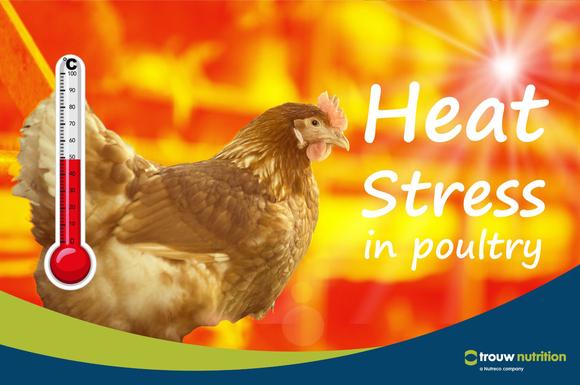Explore all the information on
Poultry drinking water
Water is a critical nutrient that receives little attention until a problem arises. Not only should producers make an effort to provide water in adequate quantity, they should also know what is in the water that will be flowing through the water lines to be used in evaporative cooling systems and consumed by the birds. Water is needed for bird consumption, reducing air temperature (including evaporative cooling pad and fogging systems) and facility sanitation. Broilers consume approximately 1.6 to 2.0 times as much water as feed on a weight basis. Water is a critical nutrient in bird metabolism and nutrition. From a physiology perspective, water consumed by the bird is used for nutrient transportation, enzymatic and chemical reactions in the body, body temperature regulation and lubrication of joints and organs. There is a strong relationship between feed and water consumption; therefore, water can be used to monitor flock performance.
Can I use ascorbic acid to neutralize chlorine water vaccination? ...
Comments : 4
Recommendations: 1
Mohammad Afrouziyeh (University of Alberta / Poultry Innovation Partnership) shares his recommendations and insights on water quality, as well as a new tool to control it, during this Engormix interview....
Comments : 3
Recommendations: 8


Veterinary APIs Market Update: Price Trends & Key Insights – February 2025
Suggested link
While summer spells fun for most of us, it’s a little different for our poultry animals such as broilers and laying hens. High temperatures cause drops in production, dehydration and heat stress which may lead to more problems like foot pad dermatitis, respiratory symptoms, shell quality problems and even death. So let's take extra care to ensure poultry welfare by providing them with easy access to clean water, shade, and proper ventilation to prevent heat exhaustion. Make sure to monitor...
Comments : 0
Recommendations: 1
In a previous article, we discussed the importance of contaminated drinking water as a risk factor for colibacillosis and stressed the need to pay attention to its microbiological quality. In a recent trial made in our lab, we showed the in vitro effectiveness of DigestoCid© to...
Comments : 11
Recommendations: 0
The issue of antibiotics resistance on animals has raised concerns about meat safety and human health. The banning of antibiotics- growth promoter in animal feed was announced in the EU in 2006. Other countries are starting to follow the regulation to comply with the compulsory withdrawal periods to ensure ‘antibiotics free products. Supplementation in nutrients to enhance the immunity system and lower the risk of the pathogen can help to reach the balance between maintaining animal...
Comments : 4
Recommendations: 0
Water meters are used as a management tool to track daily water usage in poultry houses. Most mechanical water meters used in poultry housing can only measure water flow rates more than 0.25 gals/min which limits reliable measurement of water usage for birds that are less than four days of age. Producers can now accurately measure water usage within minutes of chicks being placed in the house by using ultrasonic water meters. Modern house controllers can collect, store, and graph water...
Comments : 3
Recommendations: 1
Tom Tabler (The University of Tennessee) explains why neglecting pH or the presence of bacteria in the water can prove costly, in this interview during IPPE 2023 in Atlanta, USA....
Comments : 0
Recommendations: 0
Garret Ashabranner (University of Georgia) explains the different issues that can be identified by using water meters, in this interview during IPPE 2023 in Atlanta, USA....
Comments : 0
Recommendations: 1
Dr. Piotr Stanislawski shares his experience with Engormix members on supplementation through feed or water, when and why do one or the other....
Comments : 1
Recommendations: 3
Acidification of drinking water of broilers prior to processing is commonly used to reduce Salmonella entering into the plant, via crop contamination. This study evaluated an organic acid and essential oil product (OEP), when provided in the drinking water (3 ml/gallon) early and/or late in production, for reduction in S. heidelberg (SH) colonization in broilers. Eight hundred Ross x Ross day-old male chicks were assigned to 4 treatments in 32 floor pens, with 8 replicates per treatment and...
Comments : 3
Recommendations: 2
Daily water consumption has been used as a management tool by poultry producers for decades. Since water consumption is closely correlated to feed consumption, decreases in daily water consumption are often an indicator of reduced feed consumption and/or health issue. With the emergence of ultrasonic water meters bird water usage can now be more accurately monitored on a minute-to-minute basis thus providing the opportunity to view bird drinking/feeding activity over the course of the day...
Comments : 0
Recommendations: 0
Jonathan Broomhead (Perstorp) talks about his research on Salmonella reduction with organic acids and essential oils, in this interview during IPPE 2023 in Atlanta, USA....
Comments : 0
Recommendations: 0
Will Strickland (University of Georgia) comments on his research on water consumption and potential issues that can be prevented by monitoring it, in this interview during IPPE 2023 in Atlanta, USA....
Comments : 0
Recommendations: 0
Introduction. Maintaining drinking water quality for poultry is an important nutritional aspect as birds consume water at twice the level of feed. One prime factor that determines the wholesomeness of water is its microbial quality. Therefore, it should be of primary concern for production personnel and poultry producers to know the microbial quality of water supplies provided to their birds and confirm if it is within...
Comments : 42
Recommendations: 11
INTRODUCTION Water is the primary fluid necessary for human life. About 60% of the human body composition is water and life would not be possible without it (Chaplin, 2001). Not only is water important for the optimal functioning of the human body, but also it is the most important nutrient in the diet of some animals and the development of plants. A significant percentage of the water in the world is used in agriculture practices. In the United States, 80% of the national water...
Comments : 2
Recommendations: 1
Water is important for the overall health and performance of birds, yet less focus has been on water compared to the other nutrients. Increase or decrease in water to feed intake ratio (WI:FI) indicates issues related to nutrition, health or management of the shed particularly in broilers due to their fast growth. An automated water measurement system was developed at the University of New England to measure water intake in broilers. This system was used to measure water intake in two...
Comments : 0
Recommendations: 0
Drinking water is one of the transmission methods of Avian Influenza (AI). Water sources can be contaminated by infected materials and transmitted to poultry farms. The risk of the chicken being exposed to the virus via water is high. When AI hit the poultry industry in the US in 2015, water samples were tested positive for the virus. Taking samples from poultry drinking water lines is an efficient way to conduct avian influenza surveillance. Water treatment is an important control strategy...
Comments : 0
Recommendations: 2
I have been using chlorine dioxide as a water sanitiser for years and have seen problems with leg health. Other producers have seen simular problems. Recently, I have heard that D3 is somehow locked up with the use of chlorine dioxide. What effects does it have on D3 uptake in broilers? Any ideas solutions? ...
Comments : 8
Recommendations: 0


Veterinary APIs Market Update: Price Trends & Key Insights – February 2025
Suggested link
Recently a study was conducted on commercial broiler farms examining broiler water usage over the first seven days of a growout. High-accuracy, ultrasonic water meters were installed in twenty-two broiler houses (18, 40' X 500' houses, four 54' X 500' houses) on nine farms. The water meters were capable of accurately measuring water...
Comments : 0
Recommendations: 1
Getting chicks off to a good start is very important to overall flock performance. At no time does a bird grow faster than during the first week of its life. Over the last week of a 42-day-old flock, a bird’s weight will increase by approximately a third. In contrast, a chick’s weight will typically increase approximately...
Comments : 0
Recommendations: 0






.jpg&w=3840&q=75)




.jpg&w=3840&q=75)






.jpg&w=3840&q=75)


.jpg&w=3840&q=75)



.jpg&w=3840&q=75)










